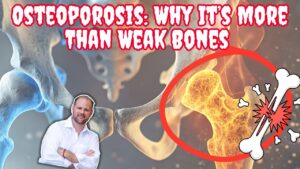Struggling with Fibromyalgia? Here’s What You Need to Know
If you have fibromyalgia and you’re still suffering from pain, fatigue, and inflammation, there’s a critical factor you might be overlooking—Vitamin D levels.
The Truth About Vitamin D & Fibromyalgia
When I analyze extensive bloodwork in my clients, I often find that people with fibromyalgia have suboptimal vitamin D levels. But here’s the problem:
👉 Standard lab ranges say vitamin D should be between 30 and 100… This is a huge range!
👉 But if you have fibromyalgia, you don’t want your levels at 30, 40, or even 50!
Where Should Your Vitamin D Levels Be?
🔹 Research shows that fibromyalgia sufferers should aim for a vitamin D level of 80
🔹 At this level, your body has the best chance to reduce pain & inflammation
How Does Vitamin D Help Alleviate Fibromyalgia Symptoms?
✅ Supports muscle and nerve function
✅ Reduces chronic pain & inflammation
✅ Boosts energy and immune health
What Should You Do Next?
✔ Check your bloodwork—is your vitamin D below 80?
✔ If it’s too low, start supplementing with vitamin D daily! You can do this easily over the counter, and also try to get more sunshine for natural Vitamin D.
✔ Monitor your levels & adjust as needed
This is Part 2 of a 5-Part Fibromyalgia Recovery Series—if you found this helpful, like, comment, and share it with someone who needs this!
Frequently Asked Questions (FAQ)
Vitamin D supports muscle and nerve function, reduces chronic pain and inflammation, and boosts energy and immune health. People with fibromyalgia often have low vitamin D levels, which can worsen their symptoms.
While standard lab ranges list 30–100 as “normal,” research suggests fibromyalgia sufferers should aim for around 80 for the best chance at reducing pain and inflammation.
You can increase vitamin D by supplementing daily, spending more time in the sun, and monitoring your bloodwork to keep levels near 80. Supplements are easily available over the counter.








